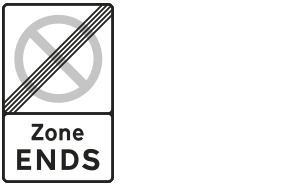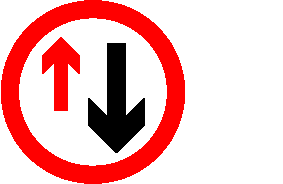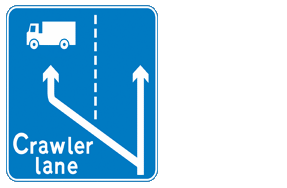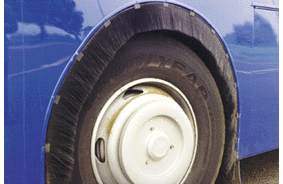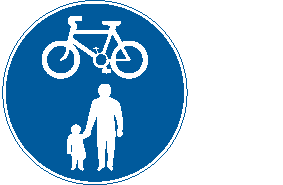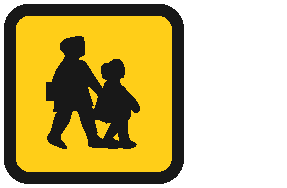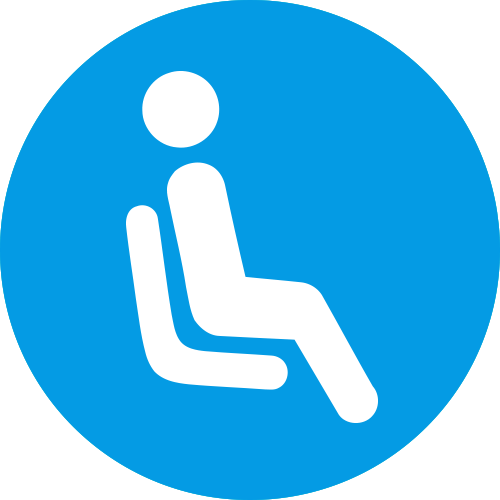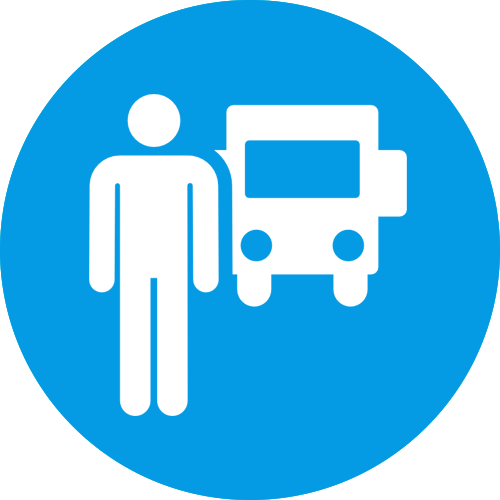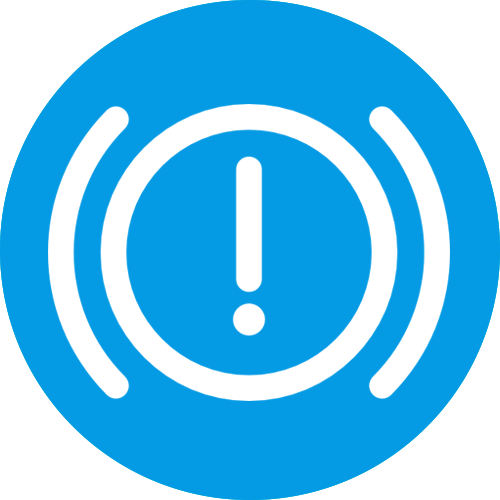
Free PCV Theory Test
You have 115 minutes (1 hour 55 minutes) to answer 100 multiple choice PCV theory test questions. You must score at least 85 out of 100 to pass the test. Answers may be checked after each question or you can wait until the end of the test to view your results. Best of luck!
Reveal all questions for this test ▼
B
C
D
Explanation: You must take care when approaching any hazard where height is limited. Know the height of your vehicle and what you can drive under safely. If you aren't sure that it's safe, take another route.
Explanation: Look out for variable-message warning signs telling you about
- lane closures
- speed limits
- hazards.
Explanation: The driver must take responsibility and follow the drivers' hours and tachograph rules. Failure to do so can result in legal action and penalties - such as a fine.
Explanation: The working week is defined as from 00.00 hours on Monday to 24.00 hours on the following Sunday. When taking the weekly rest period, a daily rest period must normally be extended to at least 45 consecutive hours.
Explanation: Lift the pedestrian's leg so that the wound is higher than their heart. This should reduce the flow of blood. Check that the limb isn't broken and there's nothing in the wound before applying pressure over it.
B
C
D
Explanation: If you notice any missing wheel nuts, park and phone for assistance. It's essential that all wheel fixings are in place and tightened to the torque specified by the manufacturer. Checks should be made before you start any journey, but make a visual check every time you start up again after a rest stop.
B
C
D
Explanation: If the air-pressure warning activates, you should have enough air to allow you to stop safely on the hard shoulder. Don't delay stopping, as further loss of air may cause the brakes to lock on. Switch on the hazard warning lights. Use the nearest emergency telephone to call for assistance.
Explanation: Faulty power steering will make your steering wheel very difficult or almost impossible to turn. Continuing to drive could cause danger to you and other road users. You should park safely and get help.
B
C
D
Explanation: Keeping your vehicle's tyres in good condition will give them a good grip on the road and will improve the vehicle's overall stability. Each tyre must have at least the minimum legal depth of tread across three-quarters of its width. Renew tyres well before they wear to less than that.
Explanation: You must make sure that you adjust the seat so that you're able to reach all the controls and see in all the mirrors before you start to drive any vehicle. You should also be able to lean out of the window and check your offside blind spots.
B
C
D
Explanation: Good forward planning will reduce fuel consumption and engine emissions. This will cause less wear on the vehicle and its tyres, as well as reducing environmental pollution.
Explanation: Even though there are no restrictions, make sure that you park where you won't cause an obstruction or endanger other road users.
Explanation: When you see this sign, you must give way to traffic from the opposite direction, regardless of the size of your vehicle.
Explanation: It's very important to know the correct fire extinguisher to use. They'll carry a coloured label or badge telling you their contents. Make sure you learn which extinguisher is which, as using the wrong one could be dangerous and may spread the fire further. For example, you should never use a water extinguisher on burning oil.
B
C
D
Explanation: On exposed bridges, the wind can be particularly strong. If the bridge has two lanes, one may be closed in windy conditions to act as a buffer lane. In severe conditions, these bridges are often closed to high-sided vehicles, caravans and motorcycles.
Explanation: Most diesel engines use a high-pressure fuel-injector system that will deliver pressurised fuel directly into the combustion chamber of the engine. This system is known as a direct-injection engine.
Explanation: In shopping areas, pedestrians frequently want to cross the road. They may be hidden by parked vehicles before stepping out into your path. Keep your speed down and be aware of the risk of pedestrians suddenly walking into the road.
Explanation: The hiss of air-assisted mechanisms, as well as engine noise, can easily startle horses. Keep the noise to a minimum by gentle use of the brakes and, if necessary, stopping and turning your engine off.
B
C
D
Explanation: Motorways often have exposed sections of road, placing high-sided vehicles at risk in side wind. When there are extremes of weather, listen to and watch out for weather forecasts. That way, you can plan your journey for the safest time, or make a decision on whether you should travel at all.
Explanation: Where a motorway has a long or steep gradient, slow-moving large vehicles might get in the way of other traffic. To help the traffic flow, an extra lane - called a crawler lane - is sometimes found on these gradients. This helps the traffic to flow by providing the slower heavy vehicles with a dedicated lane on the left.
Explanation: You can reduce the chance of a breakdown with routine maintenance and regular checks on your vehicle.
Explanation: Following the vehicle manufacturer's guidelines for service intervals will enable worn components to be replaced before they fail. This will help prevent costly breakdowns.
Explanation: You can legally remove your seat belt when carrying out a manoeuvre that involves reversing. Don't forget to put it back on again when you've finished.
Explanation: emember that the buffeting caused by large vehicles can affect other road users, including
- cars towing caravans
- motorcyclists.
Explanation: In very windy conditions, certain types of vehicle can be blown off course. These include box vans, curtain-siders, caravans and motorcycles. Make allowances for how the wind might affect these vehicles, especially if you're overtaking.
B
C
D
Explanation: Drain covers usually have a metal surface. When wet, these covers are slippery and can cause a motorcycle to skid; be prepared for riders to avoid them.
Explanation: The brushes are part of a spray-suppression system. They reduce the amount of water thrown up at the sides and rear of the vehicle. Check them regularly for security. If they become worn, make sure they're replaced.
Explanation: Continually using the brakes could cause them to overheat. When that happens, they become less effective. This is called brake fade, and it occurs most often when the driver has to control the vehicle's speed on a long downhill gradient. To help prevent brake fade, use the endurance brake (retarder) and a lower gear to keep the vehicle's speed in check, rather than the wheel-mounted brakes.
B
C
D
Explanation: Plan well ahead to enable you to brake normally. Don't rely on anti-lock brakes to compensate for deficiencies in your driving.
Explanation: An endurance brake can help to control your speed on long downhill slopes without using the service brake. Reducing the use of the service brake helps to prevent the brakes from overheating and reduces the risk of brake fade.
B
C
D
Explanation: Check all medicines for their side-effects, such as drowsiness. If you're unsure, ask your doctor or pharmacist to explain how you might be affected by the medication.
Explanation: Don't continue to drive if you feel the onset of tiredness. Find a safe place to stop for a rest. Walking around in the fresh air during your break will help but it's no substitute for adequate rest.
B
C
D
Explanation: The red studs on your left indicate the edge of the hard shoulder, while the white studs are used between the lanes. Using more than one reference point will help you to be certain of your position.
Explanation: On a motorway where there's a long uphill gradient, there may be a crawler lane. This helps the traffic to flow by making an extra lane available on the left for slower, heavy vehicles.
Explanation: Before overtaking, you need to make sure it's safe to carry out the manoeuvre. As part of your check, look well ahead for road junctions. You shouldn't overtake as you approach a road junction, because if a vehicle emerges, or has to wait to turn, you could risk a collision.
Explanation: Never commit yourself to overtaking unless you're absolutely certain that you have the time and space to complete the manoeuvre safely. Don't take any risks that will endanger other road users.
Explanation: Plan your overtaking carefully. The weight of your vehicle, combined with the restrictions imposed by a speed limiter, is likely to make your vehicle lose speed on uphill gradients. You should take this into consideration before attempting to overtake another moving vehicle.
Explanation: Pedestrians and cyclists are shown the green light together. The signals are push-button-operated and there's no flashing amber phase.
Explanation: This shared route is for pedestrians and cyclists only. Be aware that, when it ends, the cyclists will be rejoining the main road.
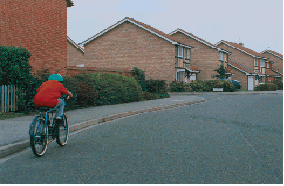
B
C
D
Explanation: Make allowances for cyclists. Allow them plenty of room, and be aware that they also have to deal with hazards. They might swerve or change direction suddenly to avoid uneven road surfaces.
B
C
D
Explanation: Always check your right-hand mirror and blind spot just before you make a right turn, as another vehicle could be overtaking you. Motorcyclists often filter along the outside of traffic queues. Keep checking all your mirrors while you're waiting to turn, because situations behind you can change quickly.

B
C
D
Explanation: Beware of children playing in the street and running out into the road. If a ball bounces out from the pavement, slow down and stop if necessary. Don't encourage anyone to fetch the ball from the road. Other road users might not see your signal and you might lead a child into danger.
Explanation: Motorcyclists and cyclists are smaller and usually more difficult to see than other vehicles. Look out for them at junctions; failing to see them can lead to a collision.
B
C
D
Explanation: It's illegal to use a hand-held mobile phone while you're driving, other than to call 999 or 112 in a genuine emergency. Switch it off before you start driving and use the messaging facility. You can pick up messages when you stop for a rest break. If you must make a call, stop in a safe place before using the phone.
Explanation: Driving today requires all of your attention, all of the time. Any distraction, however brief, is dangerous. This is why it's illegal to use a hand-held mobile phone while you're driving.
Explanation: While you're using a phone, your attention will be divided between the call and the road. This means you're unable to take in all that's happening around your vehicle. You need to be concentrating on your driving all of the time, and especially when dealing with a hazard.
B
C
D
Explanation: Under EU rules, your normal daily driving time mustn't exceed nine hours. This nine-hour period is defined as the time between
- any two daily rest periods, or
- a daily rest period and a weekly rest period.
Explanation: Tyres can become very hot during sustained high-speed driving. If they're under-inflated or damaged, there's a risk they'll burst or disintegrate. Check for excessive heat when you stop for a break.
B
C
D
Explanation: Never follow any road user too closely. This is particularly important when you're following scooter or motorcycle riders, or cyclists. They might brake or swerve suddenly; for example, to avoid a pothole on a road with a poor surface.
B
C
D
Explanation: Don't remove anything sticking to a burn. You may cause further damage and introduce infection into the wound. If you can, douse the burn with clean cold water or other non-toxic liquid for at least 10 minutes.
B
C
D
Explanation: If you're involved in an incident in a tunnel, be aware of the danger this can cause to other traffic. You should immediately switch on your hazard warning lights and switch off your engine.
B
C
D
Explanation: If your vehicle catches fire in a tunnel and it can't be driven, stop on the side of the road, as far away from passing traffic as possible. Turn off the engine and warn other traffic by switching on your hazard warning lights.
Explanation: When changing or fitting new tyres, consider buying energy-saving tyres. These have a reduced rolling resistance and improved efficiency, which helps to keep fuel costs down.
Explanation: If the engine contains too much oil, the moving parts can hit the oil surface, causing a loss of power or even damage to the engine. Excess pressure may damage oil seals, causing oil to leak onto the road, creating a slippery and dangerous road surface.
Explanation: If you're disqualified from driving because you were two-and-a-half times over the legal limit, you'll be classified as a high-risk offender. Before you can regain your licence, you'll have to satisfy the Driver and Vehicle Licensing Agency (DVLA) that you don't have an alcohol problem.
B
C
D
Explanation: Don't rely on an audible warning device to claim right of way. It's your responsibility to be cautious and take all-round observation while you're reversing.
Explanation: If you want to keep a vehicle untaxed and off the public road, you must make a SORN. It's an offence not to do so. When you've made a SORN, you won't have to pay vehicle tax, but you also won't be able to use the vehicle on the road. The SORN remains valid until your vehicle is taxed, sold, scrapped or exported.
Explanation: Traffic officers have powers to stop vehicles on safety grounds; for example, if you have an insecure load. They only operate in England and Wales. It's an offence not to comply with their directions.
Explanation: Various route planners are available on the internet. Most of them give you options, allowing you to choose the most direct route, the quickest route or a scenic route. The plans may also include rest and fuel stops. Print them off and take them with you, but don't look at them while you're actually driving.
B
C
D
Explanation: It can be frustrating and worrying to find your planned route is blocked by roadworks or diversions. If you've planned an alternative, you'll feel less stressed and able to concentrate fully on your driving. If your original route is mostly on motorways, it's a good idea to plan an alternative using non-motorway roads. Always carry a map with you just in case you need to refer to it - but stop driving before you do so.
B
C
D
Explanation: Driving with the rev counter in the red band will cause the engine to wear prematurely and can lead to expensive repairs. This could result in the vehicle being off the road for some time.
Explanation: Water is the ideal drink, because it quenches your thirst for longer than tea or coffee. It's a good idea to carry water when you're driving, especially in very hot weather. The medical profession recommends that you drink 1.5 to 2 litres of water per day.
B
C
D
Explanation: A fault in the vacuum pump could be the cause of a stiff brake pedal. There could also be a leaking connection allowing air into the vacuum. Don't continue your journey until the fault has been fixed.
B
C
D
Explanation: The Driver CPC qualification and training syllabus is designed to lead to enhanced professionalism and improvements in road safety. Other expected benefits are a general reduction in fuel consumption and emissions, resulting from a better knowledge of ecosafe driving techniques.
B
C
D
Explanation: The only effective solution to driver sleepiness is to stop in a safe place and take a break.
Explanation: Air-brake systems are fitted with a warning device that operates if the air pressure in the tanks drops below a safe level. There may be a warning buzzer and/or pressure gauges. You must be aware of the function of all gauges on your vehicle, and check them as you drive.
B
C
D
Explanation: The endurance brake (retarder) usually operates by applying resistance, via the transmission, to the vehicle's driven wheels. If the road is slippery, the tyres may lose grip and the wheels will lock.
B
C
D
Explanation: Don't be tempted to drive on the limiter when using dual carriageway roads. The speed limit for passenger-carrying vehicles is 60 mph. Be considerate to faster-moving traffic by not using the middle or outside lanes unnecessarily.
B
C
D
Explanation: If you're asked to leave your vehicle by an official who isn't in uniform, ask to see their warrant card. The official is likely to be an enforcement or police officer, but don't presume this.
Explanation: Thinking and planning well ahead will help you to deal competently and safely with hazards and other road users. A safe, comfortable ride, even when you're under pressure, will be appreciated by your passengers.
Explanation: Nobody likes to be late, but you shouldn't let the pressure of your timetable make you feel you have to rush people. Being pleasant to your passengers and showing them some common courtesies will encourage them to use your service again.
Explanation: If you're carrying children on your vehicle and it isn't on a scheduled route used by the general public, the bus must display this sign to the front and rear. When carrying children to and from school, it's likely that you'll have to make several stops in places other than recognised bus stops. Think carefully before you stop. Don't cause unnecessary inconvenience to other road users.
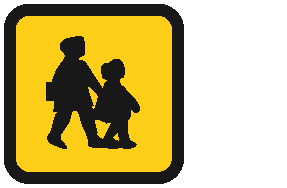
B
C
D
Explanation: You may be driving in the rush hour, when traffic is heavy, so when you stop you're permitted to show your hazard warning lights. This will tell other road users that children are getting on and off the bus. Look out for passing traffic and make sure that all your passengers get on and off safely.
B
C
D
Explanation: Passenger safety should be your priority. You should take every precaution to ensure they're out of danger.
B
C
D
Explanation: At the scene of an incident, you should tell your passengers what has happened, while reassuring them that they're not in danger. Explain to them that the emergency services are dealing with it and they should remain on the coach.
B
C
D
Explanation: If you damage a parked vehicle and the owner isn't around, you must report it to the police within 24 hours. This applies to any property you might have damaged. In Northern Ireland, all incidents must be reported to the police immediately.
B
C
D
Explanation: If one of your passengers is unconscious but breathing, get medical help immediately. Only move them if there's a danger of further injury and you're moving them to a place of safety while you wait for help to arrive.
B
C
D
Explanation: If you have to wait for long periods of time, you should turn your engine off. Noise and exhaust fumes can cause annoyance as well as pollution.
Explanation: A full category D licence entitles you to drive all buses and coaches, including the articulated type. A full category D licence on its own doesn't cover you to drive buses or coaches drawing detachable trailers of more than 750 kg; for this you'll need a D+E licence.
B
C
D
Explanation: Because small wheels need to rotate faster, their tyres are more likely to overheat on long journeys at speed. Make sure you check them when you take rest stops.
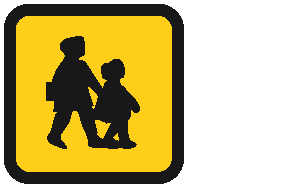
B
C
D
Explanation: Buses carrying schoolchildren must display a distinctive yellow reflective sign on the front and rear, unless they're running a scheduled service for the general public. Buses displaying the sign are permitted to use hazard warning lights when they've stopped for schoolchildren to get on or off.
B
C
D
Explanation: If your bus hits a railway bridge, you must inform the railway authority immediately, as the impact may have damaged the bridge and made it unsafe. You should find the telephone number on or near the bridge. It's very important to do this as soon as possible, so that all rail traffic is stopped. You must also inform the police immediately, or in any case within 24 hours.
B
C
D
Explanation: When passing other road users - especially motorcyclists and cyclists - in wet weather, the spray from your vehicle could affect their control. Leave plenty of room as you pass, and look in your left-hand mirror to check that they're still in control.
Explanation: If you're driving a double-deck bus, you'll feel the effect of the wind more than you would on a single-deck vehicle. This is because the vehicle's height increases the surface area that can be affected by the wind.
B
C
D
Explanation: If there's heavy rain, the spray-suppression equipment fitted to your vehicle will protect other road users from loss of vision when following or passing your vehicle. Check the wheel arches to make sure the fitments haven't worked loose and no parts have broken off. Well-maintained equipment will force the spray back down onto the road, instead of out to the rear and the sides of the vehicle.
B
C
D
Explanation: Air-brake systems use air from the atmosphere, which contains moisture. The moisture condenses under pressure, resulting in water in the system. Make sure the air tanks are drained daily to remove any water and to help prevent the system from freezing in cold weather.
Explanation: Every vehicle fitted with anti-lock brakes must have a warning light in the cab of the vehicle. The warnings may differ between manufacturers, but on all types the warning light should come on when the ignition is switched on, and turn off when the vehicle reaches a speed of 6 mph (10 km/h). If the light stays on, there may be a fault; you should have the brakes checked before continuing your journey.
Explanation: The way you drive matters. The safety and comfort of your passengers is your priority; if you have the correct attitude when you're driving, your passengers will be assured of a comfortable and pleasant journey. Good forward planning and anticipation will help you avoid having to turn or brake suddenly.
B
C
D
Explanation: If your coach catches fire and it can't go any further, stop at the side of the road, switch the engine off and switch on your hazard warning lights. Your immediate responsibility is to your passengers. Get them off the coach, keep them together and take them to the nearest emergency exit.
Explanation: Newer buses and coaches have marker lights along the side; these ensure that they're visible as they emerge at junctions, roundabouts and in other situations. If your vehicle has marker lights fitted, they must all be clean and working.
Explanation: If exhaust fumes are getting into the vehicle, this could be a danger to your passengers. Stop as soon as it's safe to do so and have the fault put right before continuing.
B
C
D
Explanation: All modern vehicles have some form of power-assisted steering, which will be able to cope with everything the vehicle requires. If the steering feels heavy, the power-steering system could be faulty and needs to be checked before you continue your journey.
Explanation: Your tyres must be in good condition and properly inflated to the manufacturer's recommended pressure. Research has shown that the tyres most likely to fail are those that have been over-inflated.
Explanation: Before uncoupling a trailer, always make sure that you've parked on firm, level ground and applied the trailer parking brake.
B
C
D
Explanation: Passengers may have left their seats early and may be standing up, waiting to get off. Don't brake harshly or open the doors until the vehicle has stopped.
Explanation: Bus stations are busy places. If people are in a rush, they may not always look properly before getting off a bus. Keep your speed down and look for manoeuvring vehicles or pedestrians stepping into your path.
Explanation: The bus-lane signs will indicate which road users are allowed to share the lane with buses and any time restrictions that may apply. Taxis are often allowed to use bus lanes, as these lanes provide a route that has less congestion and can therefore be quicker.
B
C
D
Explanation: A category D licence allows you to drive a coach or bus of any size. It also allows you to tow a trailer up to 750 kg. If you want to tow a trailer over 750 kg with a bus or coach, you'll need a category D+E licence.
Explanation: All new buses and coaches must be easily accessible for disabled passengers. They must have ramps, priority seating and colour-contrasted fittings.
Explanation: Operators of buses used for regular journeys of more than 50 km must use tachographs.
Read less
Leave a comment
PCV Theory Test Practice
PCV Theory Test Questions by Topic
About the PCV Theory Test
Contents
There are two parts to the PCV theory test; multiple choice and hazard perception. The test must be taken by those applying to become qualified minibus, bus or coach drivers.
Which order you take the two sections of the PCV theory test in is up to you – they can be taken at the same time or on separate days – but you must pass both within 24 months of each other in order to pass the theory test as a whole.
You must then pass your practical test within two years of passing your theory test. Otherwise, your theory test result will become invalid and you must retake the test.
Like drivers of large goods vehicles, drivers of passenger-carrying vehicles must also study for and sit the Driver CPC case studies test. The Driver CPC (Certificate of Professional Competence) is a qualification that was introduced throughout Europe with the aim of making roads safer and encouraging high standards of driving by drivers of large vehicles.
Multiple choice
Multiple choice means there are several possible answers to a question provided.
You must select the correct answer or answers, either by using the touchscreen computer or a mouse.
You will receive instructions on how this section should be completed and will be able to have a practice session. This will enable you to see how the questions are laid out and how to use the touchscreen computer.
There are 100 questions and the test lasts an hour and 55 minutes. You can skip between questions and ‘flag’ any you wish to return to.
You must answer at least 85 of the 100 questions correctly in order to pass the multiple-choice section of the PCV theory test.
PCV Hazard Perception Test
After a short video explaining how this section of the PCV hazard perception test will work, you will be presented with a series of 19 computer-generated (CGI) video clips. They will involve common scenarios on the road and each clip will contain at least one developing hazard.
You will need to identify these hazards early in order to achieve a high score in this section. The maximum score for each clip is five.
Unlike in the multiple-choice section, you will not be able to review your answers – because when driving you will not get another chance to react.
You must get a mark of at least 67 out of 100 in order to pass the PCV hazard perception test. The duration of the test will be about 25 minutes.
After the test
Once you have completed the hazard perception section of the theory test you will be invited to answer a number of customer-survey questions as well as sample questions which might be included in future theory tests.
You do not have to answer these questions and any information you do give is given anonymously and will be confidential. These survey questions will not affect your test results.
When you have finished you will be able to leave the examination room. You are not permitted to re-enter the room afterwards.
If you pass the PCV theory test
You should be sent a letter explaining your results for both sections of the theory test.
Once you have passed both sections, you will be sent a certificate which contains your theory test number. You will need this number when arranging your PCV practical test.
Your PCV theory test certificate is valid for two years from the date you passed one section of the test.
As mentioned above, if you do not take your practical test within two years of passing the theory test then your theory test result will become invalid and you will have to take the test again. There are no exceptions made to this rule.
If you fail the PCV theory test
The letter sent to you will include feedback on questions you answered incorrectly and will include a breakdown of the points you scored and also how you performed in the hazard perception section. This will tell you which areas you did not perform well in, so ought to help you prepare for your next theory test.
If you want to book another theory test you will be able to do so straight away, although you will not be able to take the test for at least three full working days.
PCV theory test booking
You can do this by telephone or online:
By telephone
To book a theory test over the telephone you will need:
- a valid UK driving licence
- a valid debit or credit card for payment (Visa, MasterCard, Delta and Visa Electron cards are accepted)
You can book a theory test over the telephone, between 8 am and 4 pm Monday to Friday, on these numbers:
- 0300 200 1122 (in English)
0300 200 1133 (in Welsh)
Online
To book a theory test online you will need:
- a valid UK driving licence
- a valid debit or credit card for payment (Visa, MasterCard, Delta and Visa Electron cards are accepted)
You can book online via the government website by completing this section online.
The cost of a test can go up or down. As of December 2018, the multiple-choice test costs £26 and the hazard perception test costs £11. Check the price here.
Other Information
Minibus Theory Test
Generally, you can drive a minibus in the United Kingdom without a PCV licence if you’re 21 years or older and have held a license for more than 2 years, although the maximum weight of the minibus must be no more than 3.5 tonnes and have no more than 9 seats. If you’re using the minibus for commercial purposes, however, you will need a PCV licence. See the government website for more details if you’re unsure whether you need a PCV licence to drive a minibus.



